Showing 1–12 of 66 results

Dr. Tanaka, for the first time ever, explores the absence of the Buddha-image in early Buddhist art. Applying the motif of the empty throne, she undertakes a comparative study of Buddhism and other religions.
It is next to impossible today to even think of Buddhism without the presence of the Buddha image! The image of the Buddha, in truth, has not only come to symbolise the essence of Buddhism but is also a brilliant expression of the cultural/artistic achievements of the Buddhists since ancient times. Surprisingly, the Buddha image developed at a later stage of the evolutionary process; after the parinirvana of the Buddha, the Buddhists for a considerable time beheld the Buddha and experienced him in their own minds without taking recourse to the Buddha image itself. In Absence of the Buddha Image in Early Buddhist Art, Dr. Tanaka, a well-versed scholar, has for the first time ever explored the absence of the Buddha image in Buddhist art particularly in the period from third century bc to late first century ad in order to rediscover the significance of this phenomenon. Dr. Tanaka observes Bharhut and Sanchi sculptures to point out the most essential motifs and elements of stupa-art design the visible facts pertaining to the absence of the Buddha image. The author studies the religious, philosophical, artistic and political significance of the visible facts, highlighting the concept of the empty throne as the motif representative of that absence. She applies the empty throne concept to the sanctuaries of monotheistic religions, and thus undertakes a comparative study of Buddhism and other religions, particularly, Zoroastrianism, Judaism, Christianity, Islam and Sikhism to suggest that present-day discussions on the linkage between religions can centre on this theme. The dexterous handling of the topic combined with the authors use of first-hand research material makes this an erudite study. The directness in the authors approach and the unwavering eye on the theme sustains the interest throughout. An abundance of visual material, i.e., drawings and photographs, and tables immensely aid in analysis of the visible facts. This intense work on a rich theme offers well-researched and interesting material that will be useful to scholars of religious studies, fine arts and even philosophy.
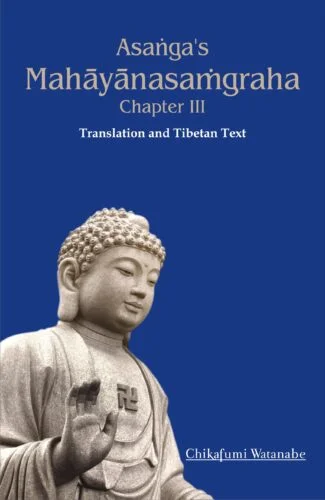
This volume presents an English translation of the third chapter of Mahayanasamgraha which discusses the bodhisattva’s entrance into the defining characteristics of the realization of vijnapti-matrata. It also contains English translations and Tibetan texts of the selected passages in the commentaries of the texts, i.e., Mahayanasamgrahabhasya and Mahayanasamgrahopanibandhana.
Mahayanasamgraha is one of the most important texts of the Yogacara School of Mahayana Buddhism. In this text, its author, Asanga, developed and systematized the Yogacara philosophy and praxis.
This volume presents an English translation of Mahayanasamgrahas third chapter which discusses the bodhisattvas entrance into the defining characteristics of what is to be known, i.e. the realization of vijnapti-matrata. The translation is based on the Tibetan text edited by utilizing and consulting all available Tibetan editions sDe dge, Co ne, Peking, sNar thang, Taipei, Lamotte, Yamaguchi and Nagao. This volume also contains English translations and Tibetan texts of the selected passages in the commentaries of the text, i.e. Mahayanasamgrahabhasya by Vasubandhu and Mahayanasamgrahopanibandhana by Asvabhava. The translation of the texts in this volume aims to advance a scholarly understanding of praxis, and the relation of the practical and philosophical theories described in the third chapter of Mahayanasamgraha and its commentaries.
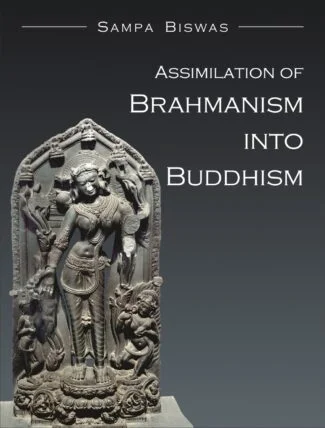
It has its focus on Buddhism and Buddhist art of early medieval period in India. The introduction of Tantrism bought Buddhism and Brahmanism closer to each other, both in enmity and similarity. It opened the gate to the vast field of Buddhist iconography, Tantric practices, deities, mudras and mandalas.
Assimilation of Brahmanism into Buddhism is a research work on Buddhism and Buddhist art of early medieval period in India. Archaeological materials and literary records suggest that Buddhism had a continuous existence during the third century bce to the thirteenth century ce in India. Though early Buddhism was totally different in its doctrines and faith from the Brahmanical system, the Buddhism of today is a religio-philosophical system having assimilated and adopted new ideas and beliefs from the environment in which it was born and nurtured.
The introduction of Tantrism bought Buddhism and Brahmanism closer to each other. It opened the gate to the vast field of Buddhist iconography along with Tantric practices, deities, mudras and mandalas. Many of these were influenced by the Brahmanic idea of godhead and some were the combination of one or more ideas of Brahmanic divinities. There was assimilation of a number of factors between Brahmanism and Buddhism.
This scholarly volume addresses the different aspects of this assimilation process by getting into a historical study of Hinayana and Mahayana Buddhism; outlining the political history, and socio-economic and religious changes during 300700 ce; scanning the political and economic background and the spreading of esoteric Buddhism; emergence of Vajrayana Buddhism; and providing a detailed sketch of Vajrayana images.
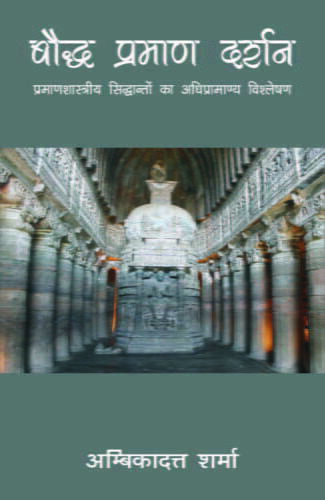
Making the basic doctrines of Buddhist epistemology the fundamental point of reference, this treatise attempts have been made to demonstrate that how Indian epistemological intellection/thinking keeps metaphysics in itself as a bequest, and in its expanding/enlarging form it persistently expresses the metaphysical divisions.
In Indian tradition of knowledge, the historical advancement of epistemological intellection/thinking flourished through five alternative points of departure, where the first belongs to Maharshi Gautama, who showing priority of epistemology over metaphysics, proposes a constructive model of epistemology. In opposition to this universally acceptable postulation of Maharshi Gautama, three refutative points of departure of epistemological critique of Nagarjuna, Sri Harsha and Jayarasi Bhatta progressed. These three attain their cognitive termination either in the severance of the priority and the position of episteme or in the deconstruction of epistemology. The fifth point of departure evolves from Tarka Pungava Dinnaga, which, parallel to Gautamas exposition and as an option of substitution to Nagarjunas epistemic displacement, presents a reconstructive model of metaphysical epistemology.
In this treatise, an effort has been made to understand the foundational structure of the aforementioned Bauddha Prasthan through certain basic principles, which happen to be the deciding factors/determinative agents in respect of dissensions relating to the matter and corollary, features, and a number of episteme and alternative approaches. From the espoused system of analysis and explication for the purpose, the meta-epistemic dimension of epistemological intellection/thinking of Indian philosophy gets revealed. In fact, it is in this dimension, the optional feature of epistemological doctrines can be recognized to know further that why any epistemological assessment/appraisal is like this?, why isnt it different? In this way, making the basic doctrines of Buddhist epistemology the fundamental point of reference, this treatise attempts have been made to demonstrate that how Indian epistemological intellection/thinking keeps metaphysics in itself as a bequest, and in its expanding/enlarging form it persistently expresses the metaphysical divisions.
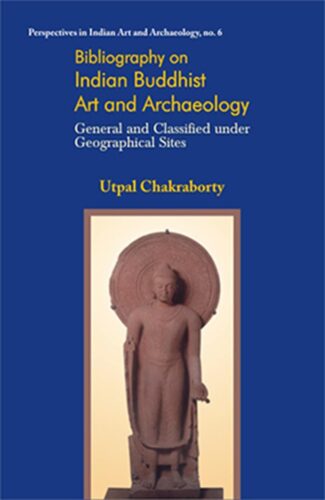
The bibliography includes 4081 entries, covering published materials in English and French languages over the last two centuries. The book gives a representative overview of what has been researched and accomplished in the field of Indian Buddhist Art and Archaeology since Wilkinss article on Bodh-Gaya in 1788 or Thomas Daniel’s first illustration on the Kanheri caves in 1798.
The bibliography includes 4081 entries, covering published materials in English and French languages over the last two centuries. It is divided into two parts. The first part contains 2410 entries dealing with Indian Buddhist art and archaeology and Indian art in general, history, religion, some Buddhist sites outside present India with special attention given to Pakistan , etc. Entries in the second part are exclusively devoted to Indian Buddhist sites. There are 57 sites; each one is individually studied. The book gives a representative overview of what has been researched and accomplished in the field of Indian Buddhist Art and Archaeology since Wilkins’s article on Bodh-Gaya in 1788 or Thomas Daniel’s first illustration on the Kanheri caves in 1798.
Borobudur was constructed during the eighth century as a guide to the Noble Path of the Buddha. Born from silence and unfolding into the serenity of the other shore, it expresses the glory of Indonesia’s awareness and creativity, the smile of her plastic forms over the centuries as well as her travels along the edge of thoughts that cross the endless corridors of memory. Though the Western world rediscovered this magnificent structure almost 200 years ago, this sacred place nonetheless remains seated in its enigmatic depth, engulfed in vaporous illusions, waiting for someone to find the base simplicity of its Truth. This book is a catalyst and invites adventurous minds to find new directions by bringing into focus the vast universe of the Borobudur in order to cultivate the Way to weeding out error. The questions posed or solutions offered herein are like water and waves: different yet identical in essence. They stir discussion. One of the special contributions of this book lies in its correlating the cyclical movements of the Sun and Moon with the numerical symbolism of Borobudur. The authors cite the magical effect of the Sun suddenly appearing out of the volcano Merapi and empowering the Borobudur-mountain with its radiant energy in poetic imagery. This magic moment of satori or enlightenment echoes the experiences of the unknown Shailendra monarch who had commissioned the monument’s construction and the inspiration that made the architect envision this Buddhist wonder.
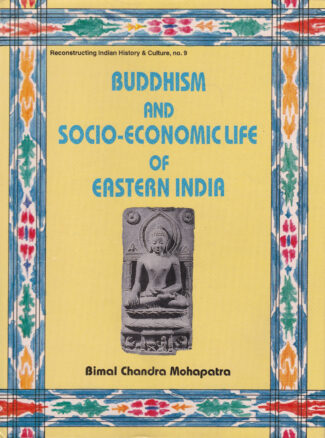
This book is the first-ever effort to gauge Buddhisms impact on socio-economic life under the Palas in Bengal and the Bhaumakaras of Orissa.
With the revival of Brahmanical Hinduism sometime around the fifth century ad, Buddhism had been dying out in India. But, paradoxically perhaps, in Bengal and Orissa, it saw not only its resurgence, but also a spell of its climactic glory for the rulers of these Eastern Indian regions, during eighth-twelfth centuries, were the devout adherents of Buddhist faith. At the secular layers, the Eastern Indian society of the times, as elsewhere in the subcontinent, was going through a period or transition: from the ancient to medieval. This book looks at the status of Buddhism in Bengal, Orissa, and their peripheral regions in Eastern India during 8th-12th centuries ad. Yet, more significantly, it is the first ever effort to gauge the impact of Buddhism on contemporary socio-economic life, ruled by the dynastic families of zealous Buddhists, namely, the Palas in Bengal (ad 750-1199) and the Bhaumakaras of Orissa (ad 756-c.950). Contextually, Dr. Mohapatra evolves indepth, analytical perspectives on pre-medieval religion, society and economy in Eastern India drawing on wide-ranging sources: both primary and secondary. Supported by relevant visual material, extensive bibliographic references, and a glossary of non-English words, the book is invaluable to the students/specialists of Buddhist studies and Indian history.

It explores the art and concept of performance in varied Buddhist traditions Chinese, Japanese, Sri Lankan and others. It explains theatrical performances representing Hinayana, Mahayana and Vajrayana cultures, with extensive endnotes and bibliographical references.
Professor George has ventured into a comparatively unchartered area seeking, as he does, to explore the art and concept of performance in Buddhism more specially in the context of Buddhist meditation and theatre. Spelling out the epistemology of performance in all its different connotations and definitional nuances, his study opens out an astonishingly vast panorama of the Buddhist theatrical practices in Sri Lanka, China, Japan, Nepal, Tibet . . . and goes on to demonstrate how, within this panorama, three kinds of theatrical practice can be identified, each corresponding to one of the three paths open to a Buddhist: the karma path, the Bodhisattva option, and enlightenment, and each representative of one of the three main cultures of Buddhism the Hinayana, Mahayana, Vajrayana. Supported by extensive endnotes and bibliographic references, Dr. Georges book also carries a range of case studies of the art of performance in Buddhism, with definitive examples, among others, of the Sri Lankan Kandy dance and Karma drama, Tibetan Chams and Chod, and Japanese Noh. Buddhism as/in Performance is a commendable piece of painstaking research, presented in a jargonless, compellingly readable style. It is certainly a pre-eminent contribution to drama studies, particularly of Buddhist theatrical practices.
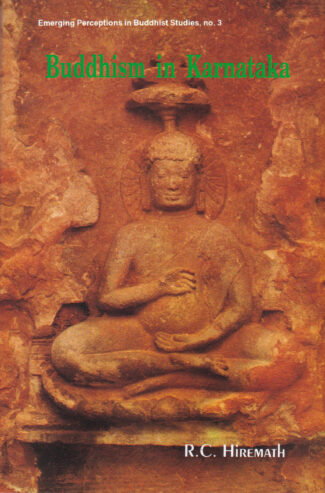
The book describes the organisation of the Buddhist centres in Karnataka, assesses the standing of Buddhism as a living, important religion prevalent there and accounts for its decay and departure to other countries.
Dr. R.C. Hiremath examines the age-old story of Siddhartha Gautamas early life and renunciation, providing the reader with the background of the Shramana schools that did not accept the authority of the Vedas. He treats, with meticulous scholarship, the Hinayana and Mahayana forms of Buddhism, and establishes that, contrary to popular belief, these two forms were not antagonistic to each other. The author maintains that Buddhism had in fact entered Karnataka before the time of the Emperor Ashoka, and that it enjoyed its heyday between the third century BC. and the third century AD. He describes the organisation of the centres, assesses the standing of Buddhism as a living important religion of Karnataka, and accounts for its decay and departure to countries outside the land of its birth. He discusses the impact of the religion on the literature of Karnataka, of which little, that is authentic, is yet known. Based on the Ashokan edicts found in the region, which are claimed to have been the first writings in Karnataka, Dr. Hiremath goes further to infer that the Kannada script and literature have been derived from Buddhistic literature and philosophy. Supported with reports of archaeological excavations and foreign travellers, the study gives a fresh insight on an hitherto untapped area. With highly informative appendix giving Devanagari text, Roman transliteration and translation of the inscriptions found in Karnataka, extensive bibliographic references, and a glossary of non-English words/phrases, the book holds out an enduring appeal to both scholars and discerning readers.
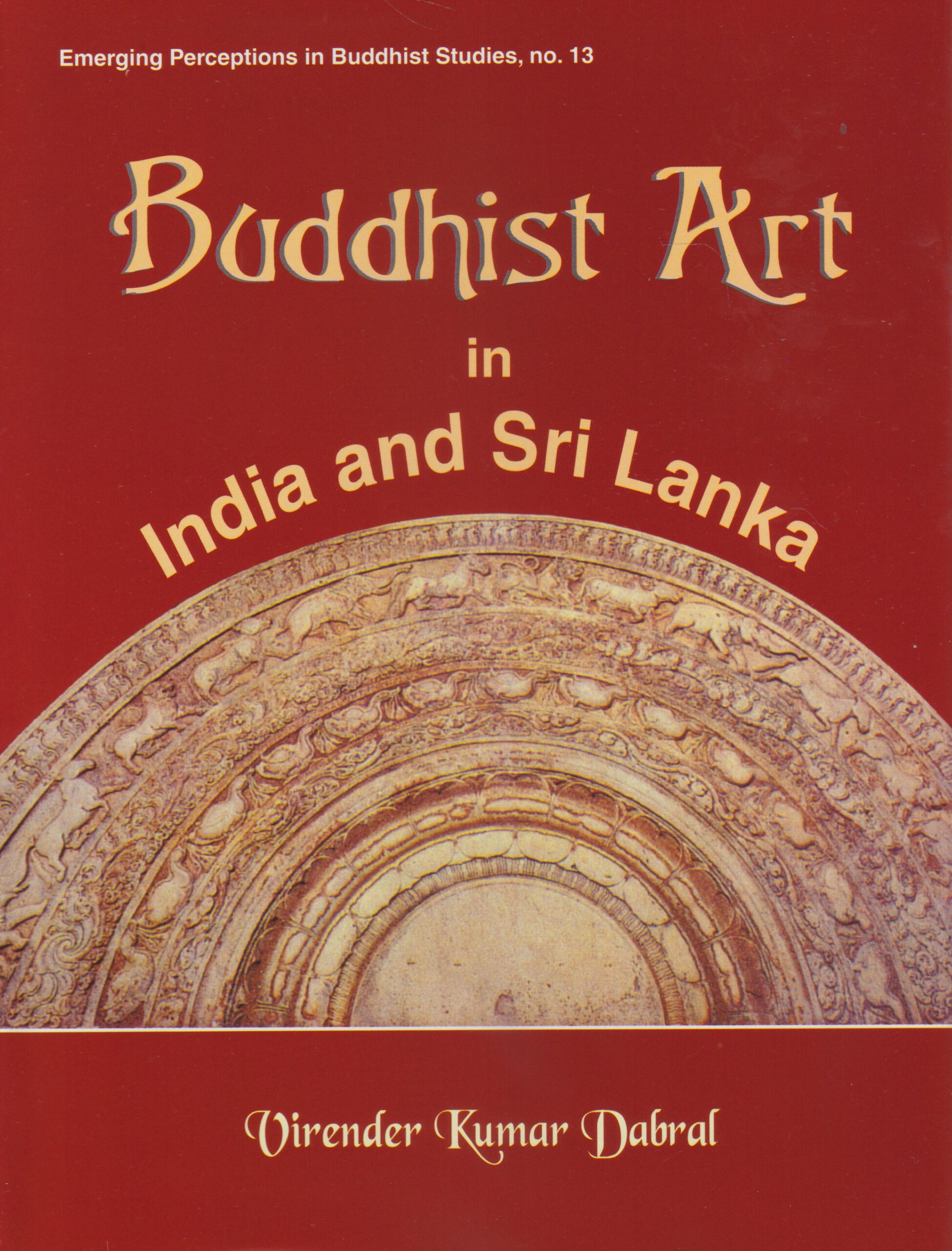
The book is a comprehensive study of the evolution and development of Buddhist visual art in India and Sri Lanka, taking into consideration their diverse forms and the impact of regional trends on them. It examines architecture, sculpture, painting, and use of symbols like the lotus and Sri Lanka devil masks.
The book is a comprehensive study of the evolution and development of Buddhist visual art in India and Sri Lanka, taking into consideration their diverse forms and the impact of regional trends on them. Consulting a number of original sources including scholarly works in the Sinhala language, Dr. Dabral highlights the salient features of ancient Buddhist art in the two countries with special attention to architecture, sculpture, painting, use of symbols like the lotus and Sri Lanka devil masks. Dr. Dabral emphasises how Sri Lankan Buddhist art though originally derived from Indian art, developed its own art forms on the basis of local conditions. The critical study evaluates Buddhist art under various rulers/empires such as the Mauryan empire, the Kushanas, the Nagas and the Guptas. With numerous plates and an extensive bibliography, it gives insights into important aspects like the architectural excellence of stupas and viharas, the Sigiriya frescoes, Ajanta and Bagh paintings, Mathura, Gandhara and Sarnath schools of art, and the Jatakas as reflected in carvings at Sanci, Amaravati and other places.
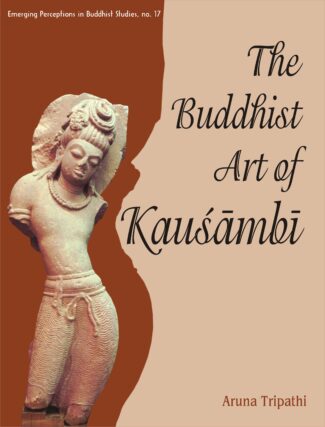
The book highlights the art treasures of Kosambi, a famous ancient centre of Buddhist art, through a study of over 300 stone sculptures, paying special attention to their iconographic features, the stone types, carving, grinding and polishing techniques and their aesthetic appeal. It discusses the uniqueness of Kosambi art as compared to Mathura and Sarnath schools.
The Upanishads capture the quintessence of Indian spiritual wisdom unfolding deepest, highly perceptive reflections on human existence and how it is related to the mysterious cosmos. Authored by enlightened seers over the period of 1500-200 bc., the Upanishadic message is a magnificent vision that raises human consciousness to sublime heights. One of the major centres of Buddhist art in ancient times, Kausambi provides evidence of an uninterrupted art tradition spanning centuries. Pointing to the scant attention Kausambi has received from scholars in the past, this work attempts to highlight its art treasures through a study of its stone sculptures. Based on scrutiny of stone sculptures found at various sites in Kausambi and its vicinity and housed in different museums, it presents perhaps the first extensive documentation of the Buddhist art of the region from the Mauryan to post-Gupta period. It examines in detail over 300 stone sculptures, paying special attention to their iconographic features, types of stone, techniques of carving, grinding and polishing and their aesthetic appeal. All this comes with a background throwing light on the history of Kausambi and its association with Buddhism, the early archaeological explorations in the region, and the individuality and uniqueness of Kausambi art as compared to Mathura and Sarnath schools. The book presents over 225 black-and-white and over 50 coloured photographs of Buddhist sculptures which are neatly classified and systematically analysed. It would prove invaluable to scholars and students of Buddhist art.

The book introduces the fundamental ethical precepts of Buddhism, which are significant and relevant to contemporary society, as these are not restricted to any caste, creed, race, region and language. It also reveals the Buddhist solution to the problems of war, suicide, gender inequality, etc.
The book introduces readers to the fundamental ethical precepts of Buddhism. Buddhist ethics are significant and relevant to contemporary society, as these are not restricted to any caste, creed, race, region and language. The ethical precepts of Buddhism are flexible and autonomous in character. They are of a very practical character, such that they can be easily adapted and applied to modern times. The precepts are essentially taken from the sacred texts of Buddhism.
This volume comes in an attempt to highlight the philosophical and ethical bases of Buddhism. It classifies the ethical precepts of Buddhism in order to show their relevance to different categories of people monks, nuns and Buddhist lay people as well as non-Buddhists. It brings out the autonomous character of Buddhist ethics and the ethical idealism of Buddhism to show that the precepts have a pragmatic character. It also reveals the Buddhist solution to problems in the world in general and individual societies in particular, problems of the nature of war, suicide, gender inequality which existed in ancient times and continue to exist today.
The book will be extremely useful to scholars and students of Buddhist philosophy and ethics.
| There are no products |